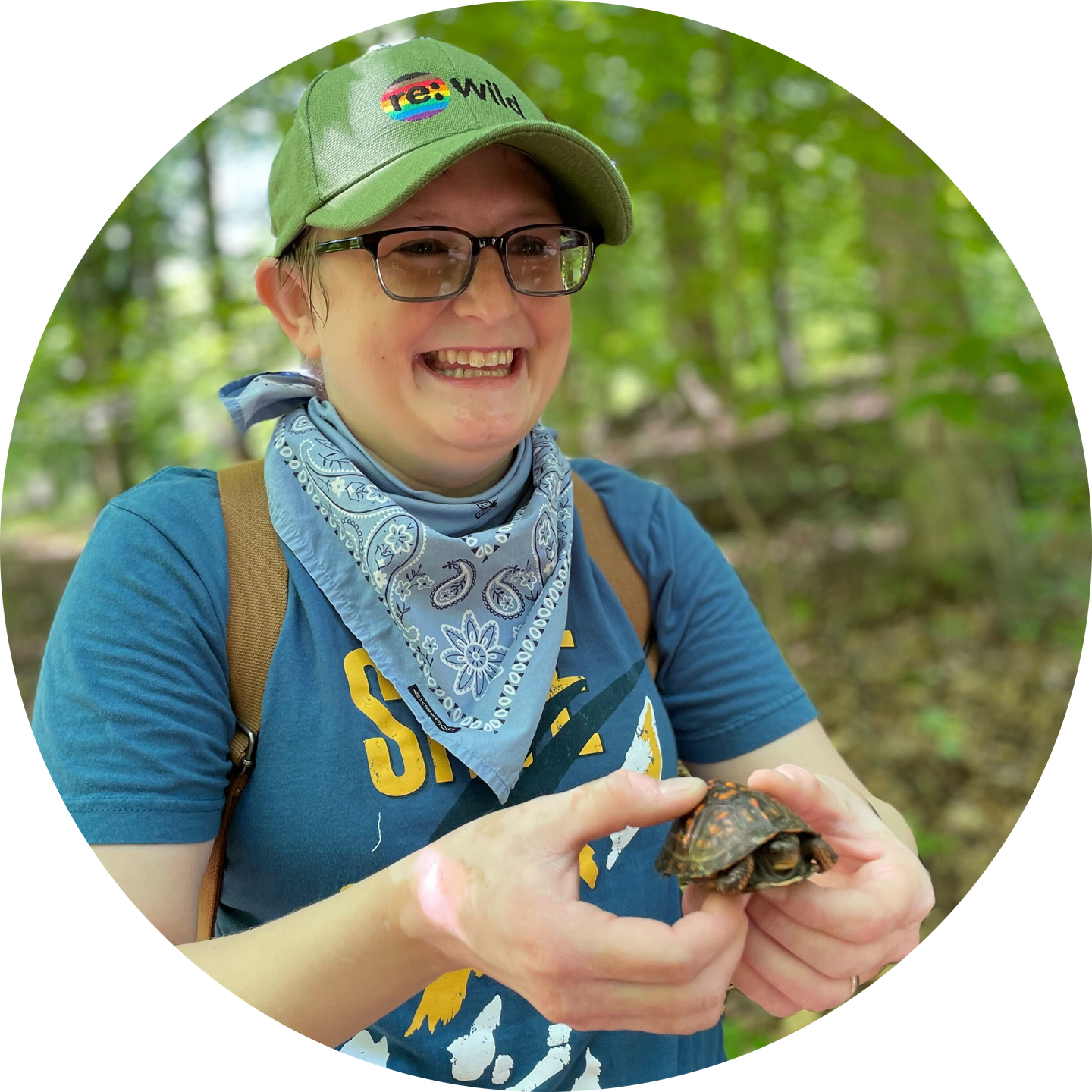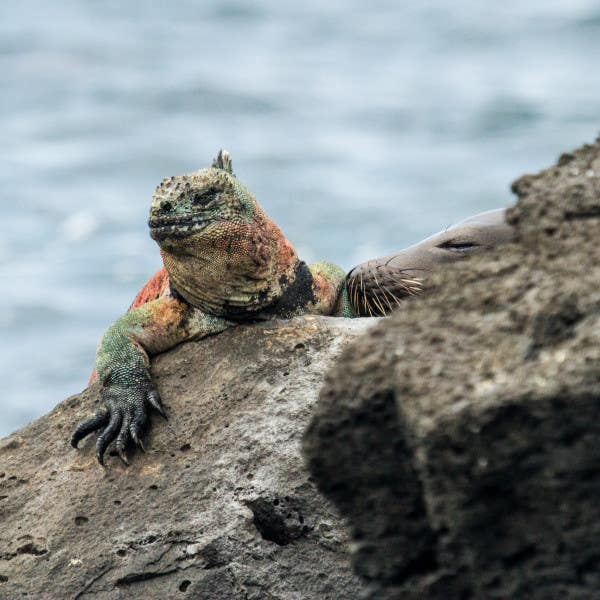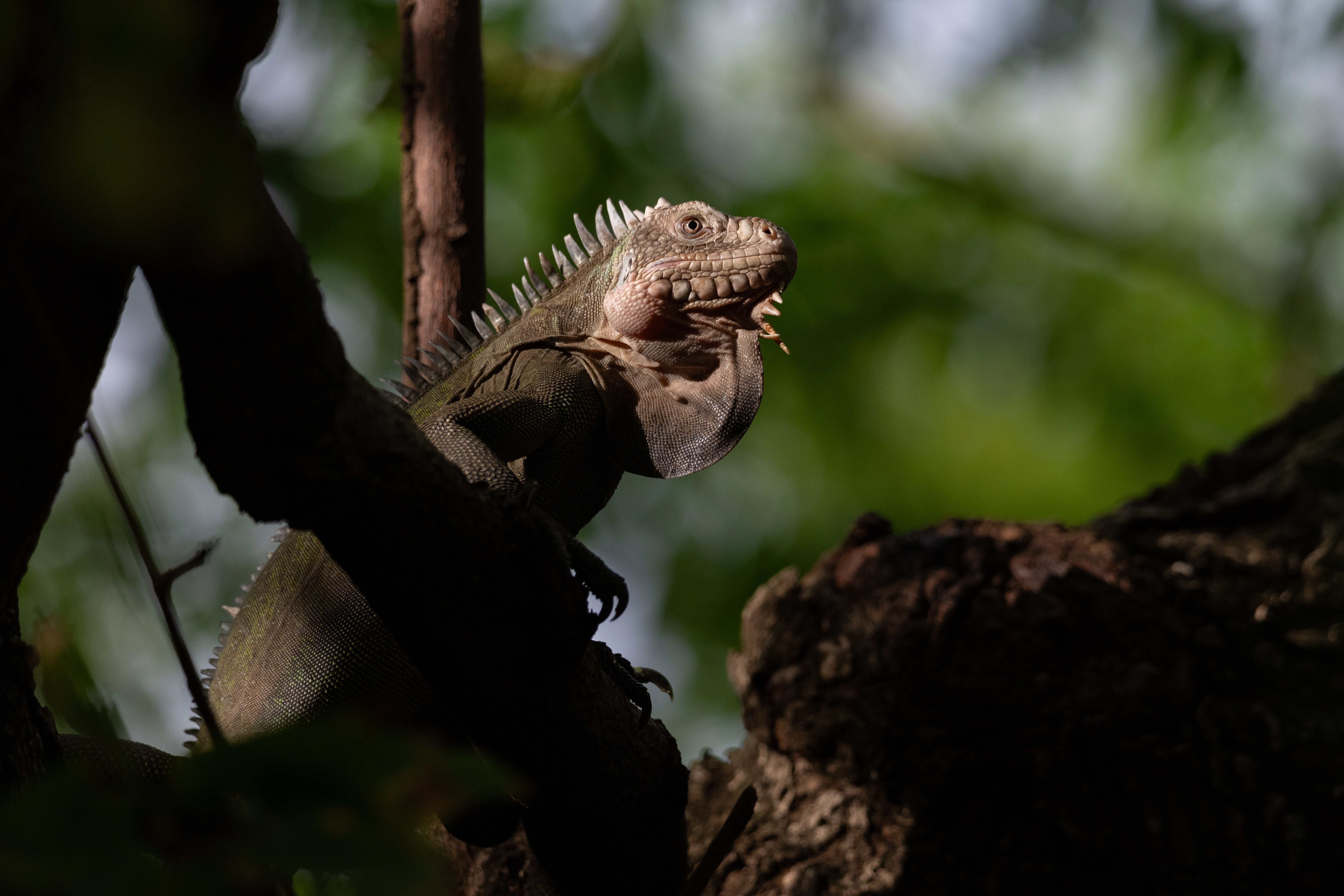For immediate release April 12, 2023 Download photos and video
Climate change, ocean degradation, and biodiversity loss are causing entire land-sea ecosystems to collapse, and island communities are disproportionately impacted. Removing invasive species from islands, and rewilding them with native species, is a scalable solution that produces outsized benefits for wildlife, oceans, and communities. Just one year after the launch of the Island-Ocean Connection Challenge (IOCC), Island Conservation, Re:wild, and UC San Diego’s Scripps Institution of Oceanography, along with a growing cadre of IOCC partners are excited to announce the first eight island-ocean ecosystems selected to be restored and rewilded from ridge-to-reef. The IOCC, launched in April 2022, brings in a new era of conservation focused on holistic restoration to benefit wildlife, oceans and communities. The challenge aims to restore 40 globally significant island-ocean ecosystems by 2030.
The first eight projects, in alphabetical order, are:
Floreana Island, Galapagos, Ecuador;
Kamaka Island, French Polynesia;
Late Island, Tonga;
Midway Atoll, United States;
Ngerkeklau Island, Palau;
Sonsorol State, Palau;
Tetiaroa Atoll, French Polynesia;
and Ulong Island, Palau.
“The first eight island-ocean ecosystems selected for the IOCC are home to some of the most biodiverse and threatened ecosystems on the planet,” said Penny Becker, vice president of conservation at Island Conservation. “The restoration and rewilding of these island-ocean ecosystems will have dramatic results for native wildlife, the surrounding marine environment, and the local communities dependent on these natural resources, serving as a model for other island-ocean ecosystems.”
The restoration and rewilding of these island-ocean ecosystems, some of which is already underway, will involve a variety of activities, including the removal of invasive species, the reintroduction of native species, the restoration of habitats, and the protection of marine and terrestrial ecosystems. The IOCC projects were chosen for their potential to meaningfully benefit both their land and marine environments, ability to be island-led and supported, and contribute to climate resiliency for communities. The IOCC founding partners continue to assess island-ocean ecosystems for restoration and will add additional island projects to the portfolio this year.
“Invasive species are destroying our island,” said Max Freire, Floreana Island native and fisherman. “They devour crops and are pushing our seabird populations to the brink of extinction. We catch less fish every year. By removing invasive species, we have the opportunity to restore both the land and the sea, and provide more ecotourism opportunities for the first time on an inhabited island in the archipelago. Our livelihoods, our health and the next generation’s future depend on it.”
Indigenous peoples and island communities have known for centuries that everything is connected—healthy marine environments depend on healthy islands. Emerging scientific research supports this, showing direct benefits to ocean ecosystems and communities following island restorations.
With the recovery of connector species, like seabirds, comes the return of oceanic nutrients to the land, which nourishes the marine environment. These restored islands have up to 250 times more nutrients, producing a 50% increase in fish, and studies have shown coral reefs can grow up to four times faster, sustaining island communities and building climate resiliency.
“Traditional wisdom has always encouraged the conservation of resources as an ecosystem rather than individual parts," said Stuart Sandin, director of the Center for Marine Biodiversity and Conservation at University of California San Diego’s Scripps Institution of Oceanography. “We are building a body of research that quantifies this by documenting native species populations on land and in the sea before and after removal of invasive species to measure the changes that occur to share them with the larger scientific community.”
The IOCC encourages practitioners, communities, funders and governments to work together to manage ecosystems holistically, rather than focusing on siloed efforts.
“These first eight projects represent an ambitious beginning to the IOCC’s collaborative work with local governments, communities, and organizations,” said Wes Sechrest, chief scientist and CEO of Re:wild. “As we restore and rewild more island-ocean ecosystems across the globe, each will benefit biodiversity, climate, and people. Each restored island provides yet another example of the power of nature-based solutions in ecosystems around the world."
You can learn more about the Island-Ocean Connection Challenge and these first eight island-ocean ecosystems at www.jointheiocc.org.
About the Island-Ocean Ecosystems
Floreana Island, Galápagos, Ecuador is home to a community of about 140 people dependent on healthy island-ocean connections for survival. The island hosts an incredible diversity of native species found nowhere else in the world, including the Floreana mockingbird and the Floreana giant tortoise. Multiple invasive species on the island are destroying biodiversity: they've already contributed to the extirpation of 13 species and currently threaten a further 54 native species. Surrounding Floreana lies a rich marine environment that is suffering from the loss of nutrients that native wildlife provides. Removing invasive species from Floreana will fulfill the community’s vision of a thriving and sustainable island.
“Invasive species are destroying our island. They devour crops and are pushing our seabird populations to the brink of extinction. We catch less fish every year. By removing invasive species, we have the opportunity to restore both the land and the sea, and provide more ecotourism opportunities for the first time on an inhabited island in the archipelago. Our livelihoods, our health and the next generation’s future depend on it.” --Max Freire, Floreana Island native and fisherman
Kamaka Island, French Polynesia is a small territory in the Gambier Islands of French Polynesia in the Southern Pacific Ocean. Kamaka has historically been known for its abundance of seabirds, such as the Polynesian storm petrel, Tahiti petrel and Murphy’s petrel. Invasive rats on the island have devoured seabird eggs and young and destroyed natural habitat. This in turn impacts nearby ocean life and locals that rely on subsistence farming, including fishing.
“Through the Island-Ocean Connection Challenge we hope Kamaka will become a stronghold for seabirds, including the threatened Polynesian storm petrel. These birds thrive on nearby rat-free islands, which benefits the surrounding reefs and ocean.” --Thomas Ghestemme, director, Société d’Ornithologie de Polynésie (Manu)
Late Island, Tonga in the Southwest Pacific Vava’u island group has some of the most intact, high-biodiversity, native broad-leafed island forests in the world and supports large populations of many of Tonga’s birds and reptiles. Late is home to two birds found nowhere else in the world: the Tongan whistler and the Vulnerable Shy ground dove. Invasive rodents are devouring bird and reptile eggs, as well as their young, and are spreading invasive plants that outcompete the native forest. Removing invasive rats from Late will provide a secure home for native wildlife and could allow for a future translocation of the endangered Tongan megapode. “
Removing rats from Late is a huge step for Tonga and the Pacific. The project will not only provide security for a significant proportion of Tonga’s remaining biodiversity but will improve the productivity of nearshore reefs, which are an important resource for Vava’u communities.” --Richard Griffiths, South and West Pacific program manager, Island Conservation
Midway Atoll, United States consists of three small islands tucked away at the far end of the Northwestern Hawaiian Islands. The atoll supports the world’s largest albatross colony, hundreds of thousands of Bonin petrels, and critically endangered Laysan ducks. Surrounding the island is a rich reef filled with over 250 species of fish, 29 species of coral, and many invertebrate species. Invasive carnivorous mice on the island are attacking native albatrosses that do not have the evolutionary response needed to stop these predators.
“The Midway Seabird Protection project aims to restore the atoll by permanently stopping the known and unknown harms caused by invasive mice, setting the stage for additional long-term recovery and establishing the entire Northwest Hawaiian Islands as free from invasive rodents." --Wes Jolley, head of operations U.S., Island Conservation
Ngerkeklau Island, Palau is a beautiful nature reserve owned by the state and managed by the Ebiil Society. Ngerkeklau’s pristine mangroves, forests and stunning beaches provide habitat for unique Palauan birds, including the Palauan megapode. It also boasts a rich variety of “connector” species – such as the hawksbill sea turtle and several seabirds – which live on both land and sea and are significant contributors to the island-ocean ecosystem. Unfortunately, the Palauan megapode and hawksbill sea turtle are vulnerable to predators such as invasive rats. Invasive rats also degrade and destroy the ecosystem as a whole by reducing biodiversity and disrupting the natural balance of the island.
“Almost a year since the rodent eradication on Ngerkeklau, we've seen exponential plant growth and flourishing nature, which we have not seen before, including crabs.” --Ann Singeo, executive director, Ebiil Society
Sonsorol State, Palau comprises four islands – Sonsorol, Fanna, Merir and Pulo Anna – that lie nearly 200 miles southwest of Palau’s main islands. They demonstrate strong land-sea connections, having diverse seabird and land crab communities – and they are encircled by majestic coral reefs. Invasive rats have reduced seabird populations, significantly depleting rates of nutrient deposition, which in turn limits the productivity of the surrounding reefs. The impacts of invasive species, compounded by climate change, have diminished a once flourishing community dependent on natural resources. Today, only a small population remains.
“Rats have infested our plants, including tuba. They threaten our food security and spread diseases. The community has been wanting, crying out for this kind of project to happen. We will definitely benefit from the restoration of Sonsorol.” --Nicholas Aquino, governor of Sonsorol State, Republic of Palau
Tetiaroa Atoll, French Polynesia, located just 35 miles (56 kilometers) from Tahiti in the Pacific Ocean, is made up of 12 islets or motus. The islets host a diverse array of wildlife, including critical nesting habitat for French Polynesia’s seabirds, green sea turtles, coconut crabs, other native invertebrates, and endangered, regionally endemic bird species such as the Polynesian ground dove and the Tuamotu sandpiper. Beyond Tetiaroa’s tropical forests and sandy beaches lies one of the world’s most secluded and near-pristine coral reef ecosystems. Invasive rats threaten the atoll’s native animals and plants, negatively impacting the surrounding fish populations, plankton and countless other marine species.
“Our vulnerable ecosystem cannot function with the persistent threats of invasive animals. When terrestrial fauna and flora are reestablished, they have a profoundly positive impact on linked ecosystems. We’re excited to facilitate the study of linked ecosystems and how targeted interventions can lead to an extraordinary amount of positive change beyond a single island.” --Stan Rowland, chairman of the board at Tetiaroa Society
Ulong Island, Palau is located 15 miles (24 kilometers) west of Koror in the iconic Rock Islands. In addition to an ancient cultural history, Ulong is home to countless animals, plants and organisms dependent on the island’s finely tuned ecosystem. Unfortunately, invasive species on Ulong are disrupting the balance and decimating the huge abundance of seabirds that flourished there. Rare local forest birds such as the Palauan megapode and the Palauan ground dove, snails, crabs and turtles have also been impacted, which concurrently affects the surrounding reefs and marine life as well. “We’ve seen firsthand the incredible benefits removing invasive species has had in Palau. Ulong can serve as a model for similar interventions in the region. Both native wildlife and our communities stand to benefit.” --Tutii Chilton, Micronesian program manager, Island Conservation
Island-Ocean Connection Challenge Partners and Supporters
Founding partners, Island Conservation, Re:wild and Scripps Institution of Oceanography launched the Island-Ocean Connection Challenge in April 2022 at the Our Ocean conference in Palau with the Republics of Panama and Palau and with supporters including the David and Lucile Packard Foundation, Oceankind, Cookson Adventures, the Leo Model Foundation, and North Equity Foundation. Since then, the campaign has welcomed new partners and supporters, including the governments of the Dominican Republic, Chile, Ecuador, the Republic of the Marshall Islands, American Bird Conservancy, Ebiil Society, Tetiaroa Society, Global Island Partnership (GLISPA), Secretariat of the Pacific Regional Environment Programme (SPREP), Société d’Ornithologie de Polynésie, Danny Faure Foundation, Marisla Foundation, the Oceans Finance Company, and many others. # # #
Photo: Floreana Island (Photo courtesy of Island Conservation) Download photos and video
Island Conservation Island Conservation is our world’s only international nonprofit conservation organization dedicated solely to preventing extinctions on islands. Our collaborations with local island communities aim to improve livelihoods, manage invasive species, and reintroduce native animals and plant life. Island Conservation is a United States-based 501(c)(3) charitable organization working through diverse local and international partnerships to foster sustainable development, climate resilience, and healthy island-marine ecosystems across the globe. Visit us at www.islandconservation.org.
Re:wild Re:wild protects and restores the wild. We have a singular and powerful focus: the wild as the most effective solution to the interconnected climate, biodiversity and human health crises. Founded by a group of renowned conservation scientists together with Leonardo DiCaprio, Re:wild is a force multiplier that brings together Indigenous peoples, local communities, influential leaders, nongovernmental organizations, governments, companies and the public to protect and rewild at the scale and speed we need. Learn more at rewild.org.
Scripps Institution of Oceanography at UC San Diego Scripps Institution of Oceanography at the University of California San Diego is one of the world’s most important centers for global earth science research and education. In its second century of discovery, Scripps scientists work to understand and protect the planet, and investigate our oceans, Earth, and atmosphere to find solutions to our greatest environmental challenges. Scripps offers unparalleled education and training for the next generation of scientific and environmental leaders through its undergraduate, master’s and doctoral programs. The institution also operates a fleet of four oceanographic research vessels, and is home to Birch Aquarium at Scripps, the public exploration center that welcomes 500,000 visitors each year.
Contact
Lindsay Renick Mayer Re:wild lrenickmayer@rewild.org 512-686-6225
Sally Esposito Island Conservation Sally.Esposito@islandconservation.org +1 706-969-2783
Lauren Fimbres Wood Scripps Institution of Oceanography lmwood@ucsd.edu +1 858-337-1360
Lindsay is the Director of Media Relations for Re:wild and has a particular interest in leveraging communications to inspire conservation action. Lindsay is passionate about species-based conservation and finding compelling ways to tell stories that demonstrate the value of all of the planet’s critters, big and microscopic.




